Orthodontic problems can affect anyone – in fact, our teeth are almost never naturally perfect. Malocclusion, or a “bad bite”, can cause problems with chewing, oral hygiene, speaking and aesthetics. An improper bite can be genetic, or can be caused by thumb sucking, dental disease, poor dental hygiene, accidents, birth defects or other medical conditions.
Being educated about the orthodontic problem you or your child may have is the first step to correcting it. Orthodontic treatment performed by Dr. Janine Ellis and Dr. Douglas Palaganas can improve both the functionality of your bite and the appearance of your smile.
Below are some examples of the most common orthodontic problems.
Upper Front Teeth Protrusion (Excessive Overjet)
Characterized by the upper teeth extending too far forward relative to the lower jaw and teeth. This often causes an esthetic concern that can effect a self-esteem in children, and can present an increased risk of trauma to the top front teeth.
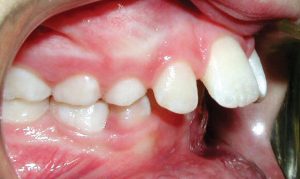
Excessive Overbite (Deep Bite)
The upper front teeth vertically cover the lower front teeth too much (you can barely see the lower teeth), sometimes causing the lower front teeth to bite into the soft tissue of the roof of the mouth.
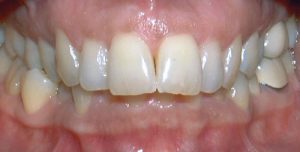
Crossbite
The upper teeth sit inside the lower teeth. It can present in the front teeth (partial underbite shown in first photos below), or as a back teeth (in the 2nd photo below), which indicated a small upper jaw, often requiring palatal expansion.

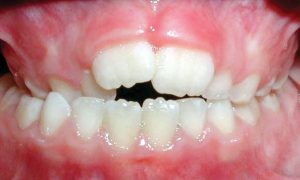
Openbite
Proper chewing and speech is impacted by this type of bite, in which the upper and lower front teeth do not overlap. An openbite may cause a number of unwanted habits, such as tongue thrusting. It is a misconception that a tongue thrust causes the open bite; the open bite usually presents first and the tongue thrust is an adaptive habit.
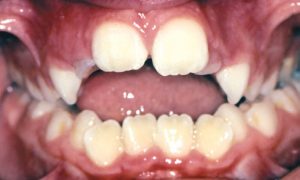
Crowding
Crowding occurs when teeth have insufficient room to erupt into proper position. Modern orthodontic techniques can can often (but not always) correct crowding without the need for extractions of adult teeth.
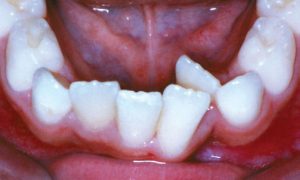
Spacing
Spacing problems may be caused by missing teeth, or they may only be a cosmetic or aesthetic issue.

Underbite
In an underbite, the lower jaw extends out, causing the lower front teeth to sit in the front of the upper front teeth. More than any other condition, early orthodontic intervention is required (by age 6 or 7).
